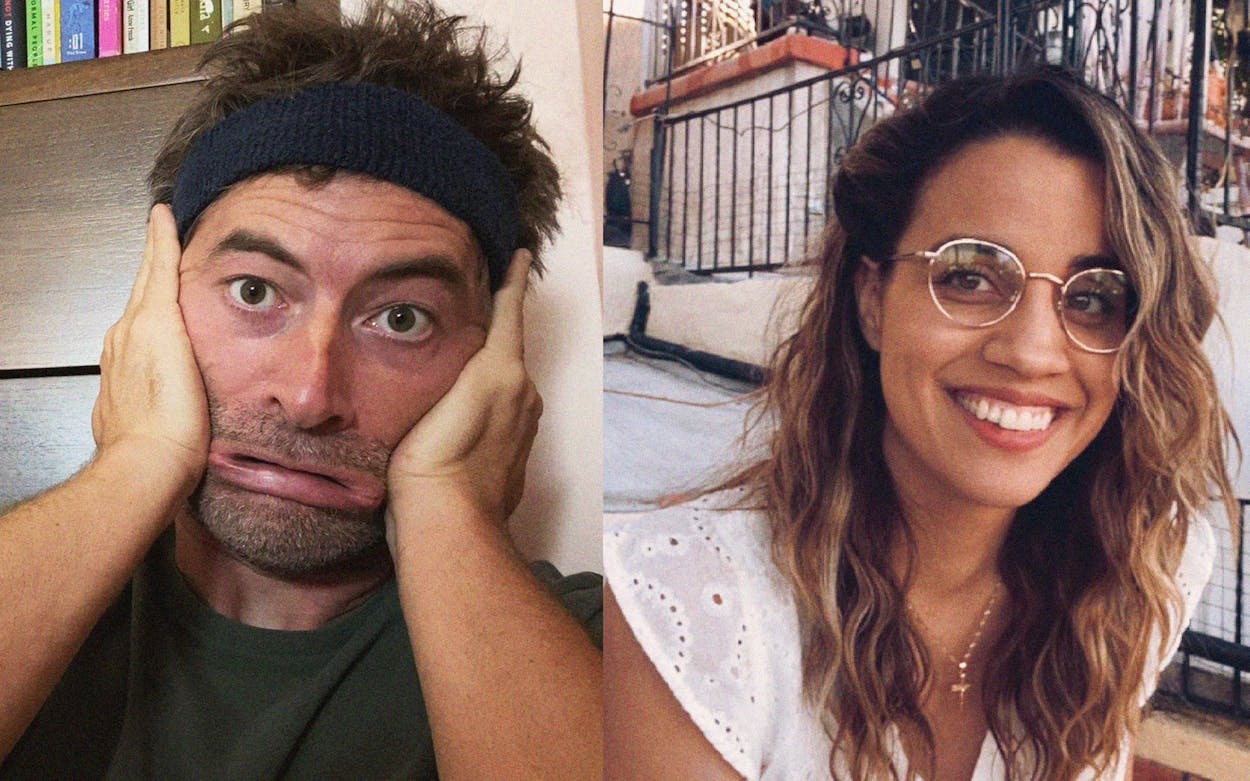One year into quarantine, the only thing more exhausting than the pandemic is a pandemic movie. As we’ve turned to virtual relationships in order to celebrate, mourn, and cling to some kind of connection, “Zoom fatigue” has become a term many of us know all too well. And while we’re still stuck inside and navigating the ongoing nightmare of COVID-19, it’s hard to imagine that movies reflecting aspects of our pandemic lives would be anything but depressing.
Enter Language Lessons, which premiered this week at South by Southwest. Starring Natalie Morales and one-time Austinite Mark Duplass, the film is a sweet, honest portrayal of human connection that builds over a series of video calls. It succeeds where other pandemic films have failed—in part, to be fair, because it has absolutely nothing to do with COVID-19.
Instead of being forced into lockdown by a virus, the two strike up their virtual relationship after Adam’s (Duplass) husband gifts him a set of Spanish lessons taught by Cariño (Morales). During its 91-minute run time, Language Lessons takes place almost entirely through video calls. In an interview with the Hollywood Reporter, Morales, who served as director and also co-wrote the film with Duplass, says the idea for that format grew out of the pandemic experience—but leaving out the actual health crisis was a conscious choice from the beginning. Instead of a global emergency, Oakland-based Adam and Costa Rica resident Cariño are kept apart by simple distance.
By the end of their first lesson, Adam and Cariño become acquainted with the awkward forced intimacy of video calls. They fumble through jokes and try to find clues about each other’s lives within the frames of their webcams. When Adam faces a sudden tragedy early on, Cariño is practically a complete stranger, but she still feels compelled to comfort him and help him cope with his grief.
It’s a bare-bones production, shot over the course of four weeks with rigs set up in the stars’ respective homes. After Duplass approached Morales with the basic premise of the film, they split off to work on backgrounds for their characters and then came back together to figure out how their storylines would intersect. As Duplass later admitted in a SXSW panel about the film, it was the first time he ever began shooting with so little of the film on paper.
As they continue to meet for lessons, Cariño helps Adam with his Spanish, and thanks to the convenient fact that learning a language mostly involves conversation, the two learn more about each other and delve into each other’s life stories. The friendship grows slowly and naturally, though it’s eventually tested by the fact that when they turn off their webcams, the other parts of their lives go on. Adam deals with the real-world implications of grief and loss, sharing his thoughts and revelations with Cariño, who’s more reserved. At one point, when Cariño arrives at one of their lessons with a bruised, scratched face, Adam feels compelled to fill in the blanks, building up a narrative of what could’ve happened to her based on what little he actually knows. When he confronts Cariño with his concern, she pulls back, though thanks to the rhythm of regularly scheduled lessons they’re eventually able to move on and continue their friendship.
This push and pull between the two characters feels real. They argue, they make up, they learn each other’s triggers and embarrassing moments. You might expect the film’s format to tire viewers, especially after they’ve participated in so many Zoom meetings in the real world, but Morales and Duplass’s effortless chemistry makes it easy to forget you’re watching a series of video calls. Through their partially improvised performances, the two breathe life into a format that leaves a lot to be desired in terms of set design or visuals.
So much of Language Lessons subverts expectations: it’s a pandemic movie with no ties to the pandemic, and a rom-com that’s entirely, wonderfully platonic. Without many bells and whistles, the connection between its two characters lets the story shine. The end result is a simple film, but one with a lot of heart.








